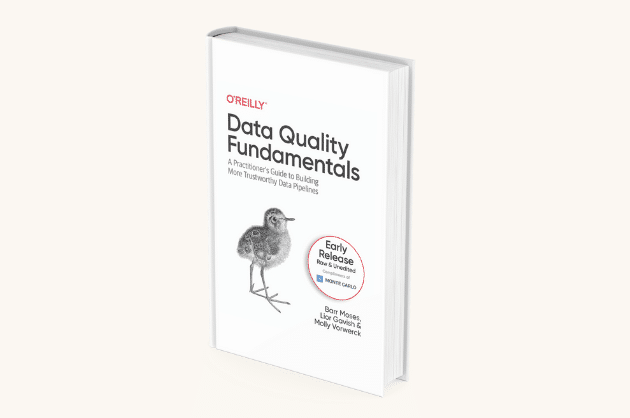Monte Carlo Announces Power BI Integration to Help Data Teams Triage and Prevent Data Incidents at Scale
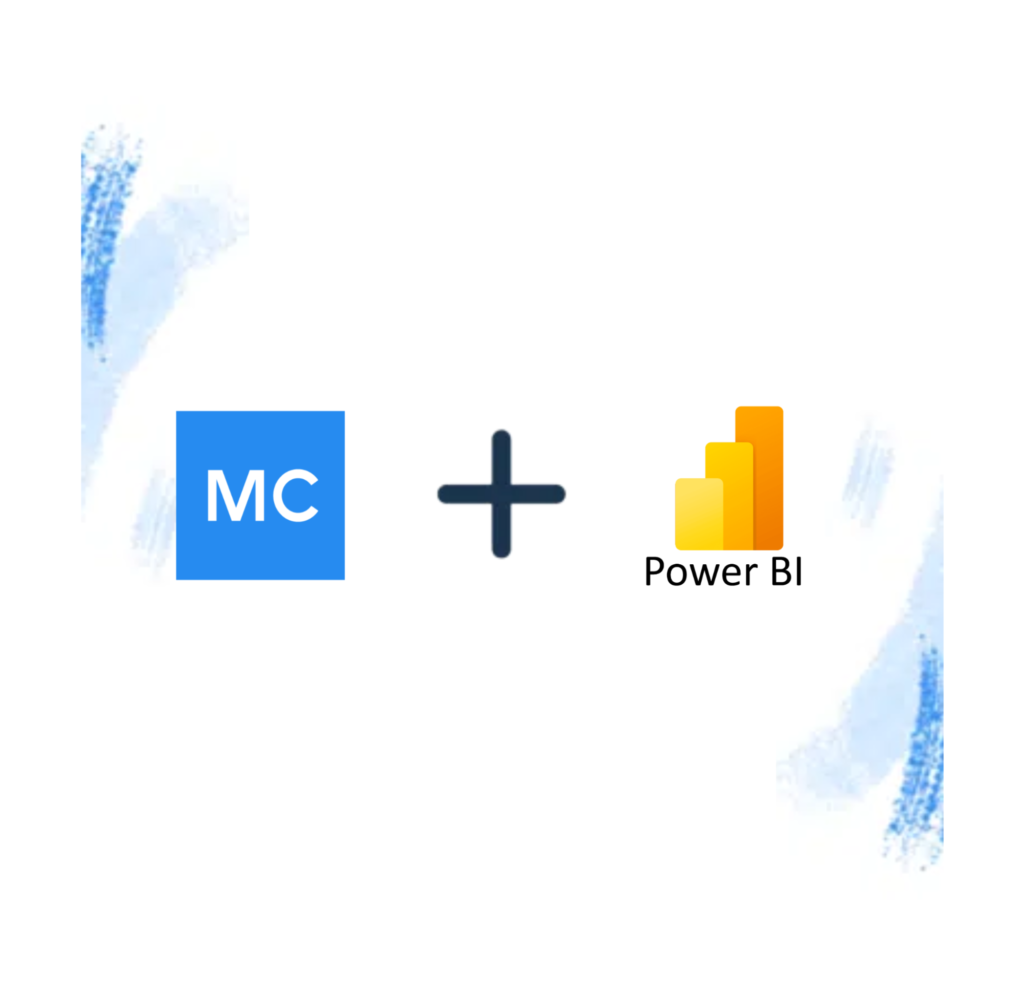
To help data teams detect, triage, and understand the downstream impact of bad data on their organizations, Monte Carlo is excited to announce a new integration with Microsoft Power BI.
In our effort to provide comprehensive, end-to-end data observability for cloud native data stacks across the world, Monte Carlo is committed to integrating with the tools and technologies most requested by our customers.
Our latest integration? Power BI, Microsoft’s leading business intelligence platform. Power BI gives business teams the ability to visualize data and make critical business decisions, something that just became even easier with Microsoft’s latest announcement for cross-tenant sharing and a new Microsoft 365 integration.
Data teams that run on top of AWS and GCP can reap the benefits of Power BI to generate fast insights leveraging data from Snowflake, AWS Redshift, BigQuery, Databricks, and other leading data warehouse and lake providers.
Monte Carlo’s latest integration with Power BI will help data engineering and analytics teams on the powerful visualization tool better understand business impact when data incidents and anomalies occur, triage and prioritize data incidents based on the impact, and properly plan schema changes or cloud migrations to ensure business continuity for their Power BI users. Read on to learn more about our new integration.
Understand business impact
Critical to a complete data observability solution is the ability to understand the impact of downstream analytics and business teams when a data incident or anomaly occurs.
Monte Carlo has enabled data engineering teams to assess business impact by automatically building lineage. With lineage, data teams are able to quickly understand relationships between tables, views, and BI dashboards, including upstream sources and downstream dependencies.
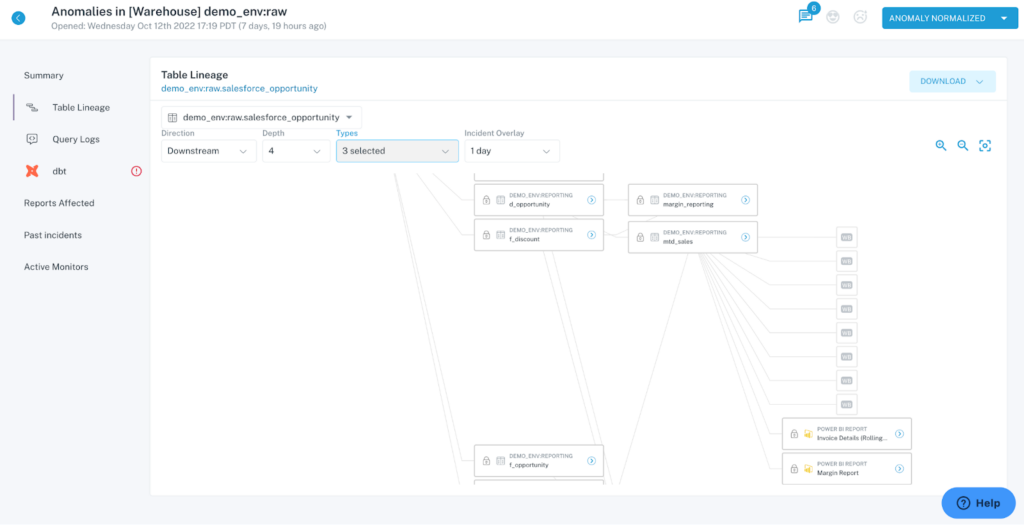
To date, Monte Carlo has enabled data teams to understand impacted BI users and dashboards for Looker, Tableau, Sisense, and more (see our complete list of integrations), and we are thrilled to help organizations that have deployed Microsoft Power BI to build greater data trust among their business stakeholders, analytics teams, and executives. With lineage, Monte Carlo equips data engineering teams with two core capabilities to ensure BI dashboard integrity: (1) triaging incidents when bad data strikes, and (2) proactively ensuring dashboards are up-to-date and reliable when making schema changes or migrating tools.
Triage data incidents
With automated lineage, data engineering teams can immediately understand the downstream impact of data incidents and anomalies when they occur.
Once the data team receives an alert from Monte Carlo that an incident has occurred in Microsoft Teams, Slack, PagerDuty, or other collaboration tools, they can click through to the incident. One of the first insights they’ll see is Impact Radius, which includes the number of tables that experienced a similar incident or anomaly, as well as potentially impacted data warehouse or lake users and dependent queries. Now, Impact Radius also includes potentially impacted Microsoft Power BI users, reports, and dashboards.
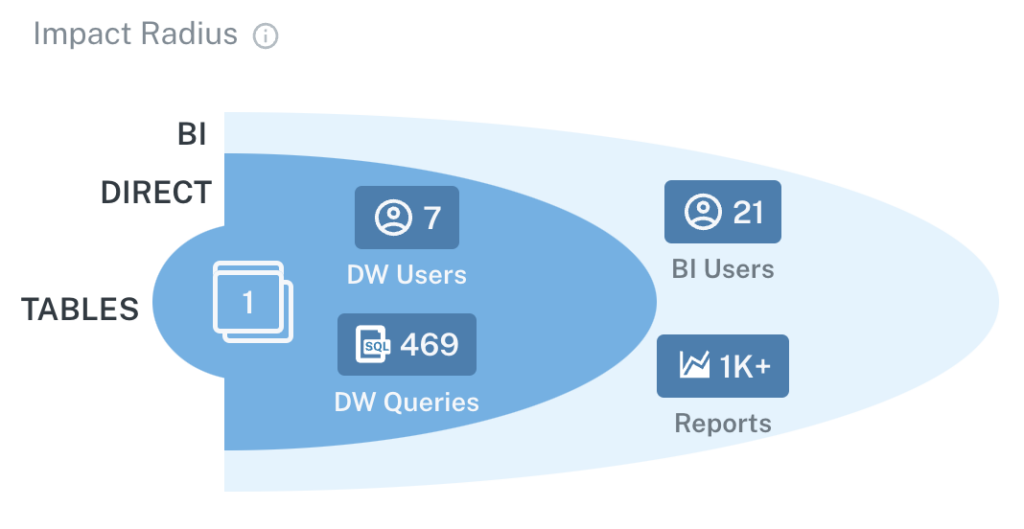
By parsing query logs and analyzing metadata from Power BI, Monte Carlo is able to automatically build lineage between data warehouse tables and views, and Power BI reports, as well as enable data engineering teams to quickly evaluate impacted Power BI users and reports when data incidents occur.
After evaluating the impact of the data incident, the data engineer responding to it can quickly assign an owner, severity level, and incident status, such as, “investigating,” within Monte Carlo and have the updates visible for Power BI users in Microsoft Teams, or the collaboration tool of choice for the organization.
Plan schema changes and migrations
Another common use case and capability for data teams and organizations using Microsoft Power BI includes the ability to assess potential impact to Power BI dashboards and reports prior to making a field, table, or schema change, and even when migrating to new cloud data warehouses or to Power BI itself.
With lineage, data teams can quickly view BI reports that could be impacted prior to making a schema change or when migrating tables to a new cloud data warehouse. In the example below of Monte Carlo’s Catalog page, we can see that a change to the subscription table, if done incorrectly, could impact a number of Power BI reports, Tableau workbooks, and Looker dashboards.
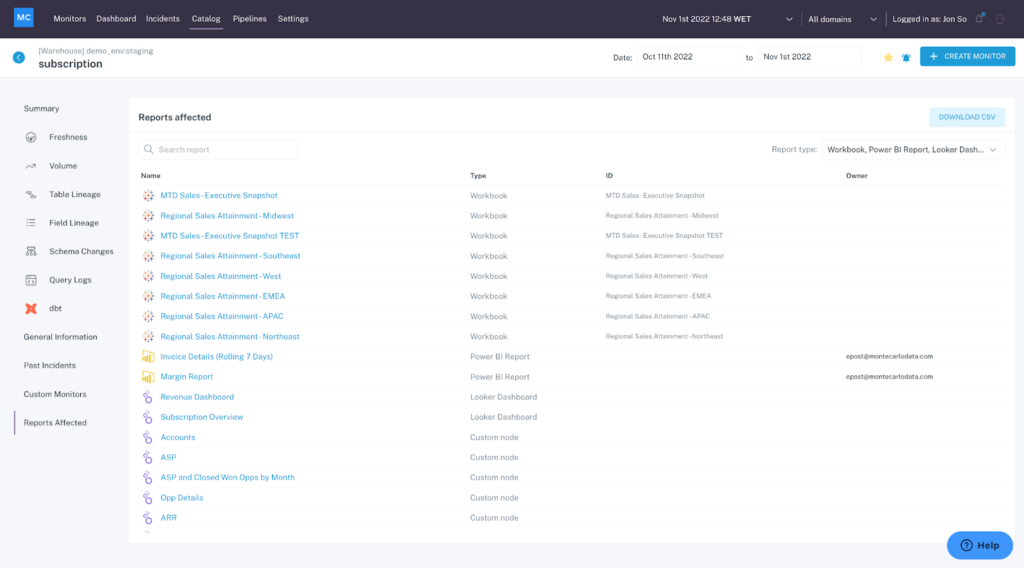
“Not every data incident is created equal. Some data anomalies can occur and not impact a thing; whereas another incident may impact a critical business intelligence dashboard that your CFO uses daily. With Monte Carlo’s Power BI integration, data teams can now triage data incidents and ensure they resolve data anomalies before they impact the business,” said Lior Gavish, CTO, Monte Carlo. “We couldn’t be more excited to support more organizations and accelerate the adoption of reliable data and analytics with data observability.” ”
With this new integration, mutual customers can quickly understand the business impact of data anomalies, properly triage data incidents when they occur, and proactively ensure data reliability when making schema changes or even migrating to new cloud warehouses or Power BI.
What our customers have to say
Monte Carlo and Microsoft Power BI customers like Shiftkey, a leading technology platform bringing critical workforce solutions, and Spark NZ, a New Zealand telecommunications company, are excited to leverage the new Power BI integration to improve data reliability and build data trust across their organizations.

“With Monte Carlo, we know our data is reliable and trustworthy,” said John Steinmetz, VP of Data & Analytics, Shiftkey. “Their Power BI integration signifies a commitment to providing even greater visibility into downstream dashboards and reports, providing an even more holistic picture of data health. I’m excited about the potential of this impactful milestone for data observability.”

“At Spark NZ, reliable data is critical to our mission of helping all of New Zealand win big in a digital world. With Monte Carlo, we can ensure that the data powering decision making and digital services is accurate, fresh, and trustworthy – in other words, reliable” said Gary Phillips, Domain Chapter Lead, Analytics and Visualization at Spark New Zealand. “With their new Power BI integration, we have confidence that the source data feeding our reports and dashboards meets stakeholder expectations, and that we’re quick to root cause and resolve incidents if they occur. We’re excited to leverage the increased visibility and end-to-end coverage afforded by their data observability platform and this new capability.”
If you are a current Monte Carlo customer and are interested in setting up the Power BI integration, please contact your customer success manager.
Want to learn more about our latest integration with Microsoft Power BI? Check out our docs or book time with us via the form below.
Our promise: we will show you the product.
 Product demo.
Product demo.  What is data observability?
What is data observability?  What is a data mesh--and how not to mesh it up
What is a data mesh--and how not to mesh it up  The ULTIMATE Guide To Data Lineage
The ULTIMATE Guide To Data Lineage 






